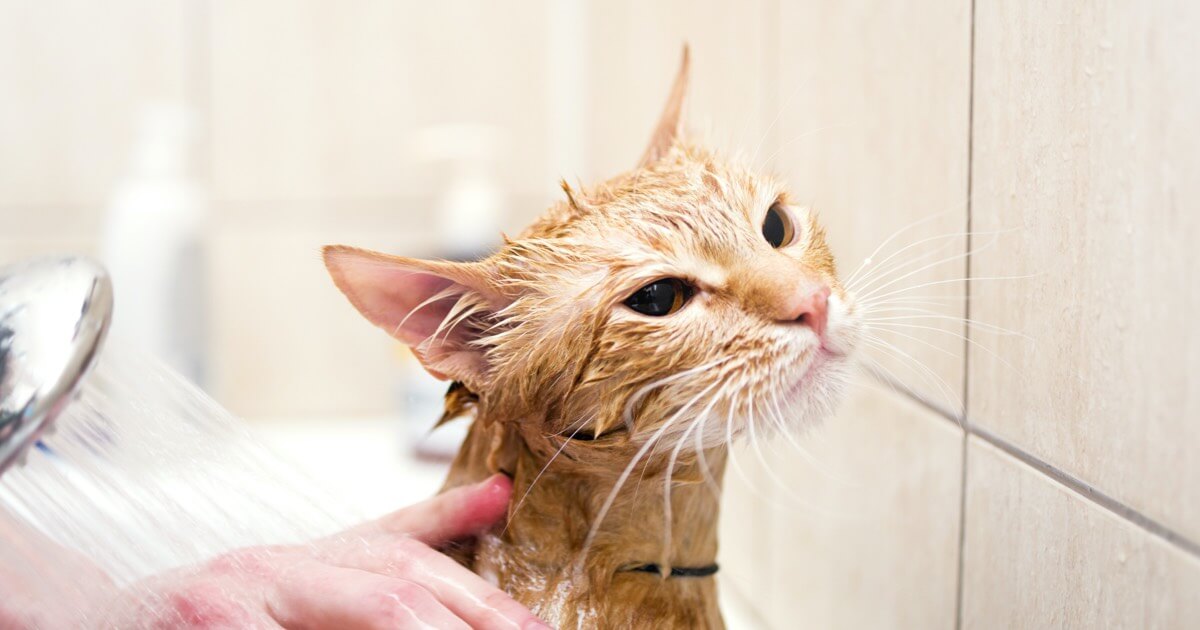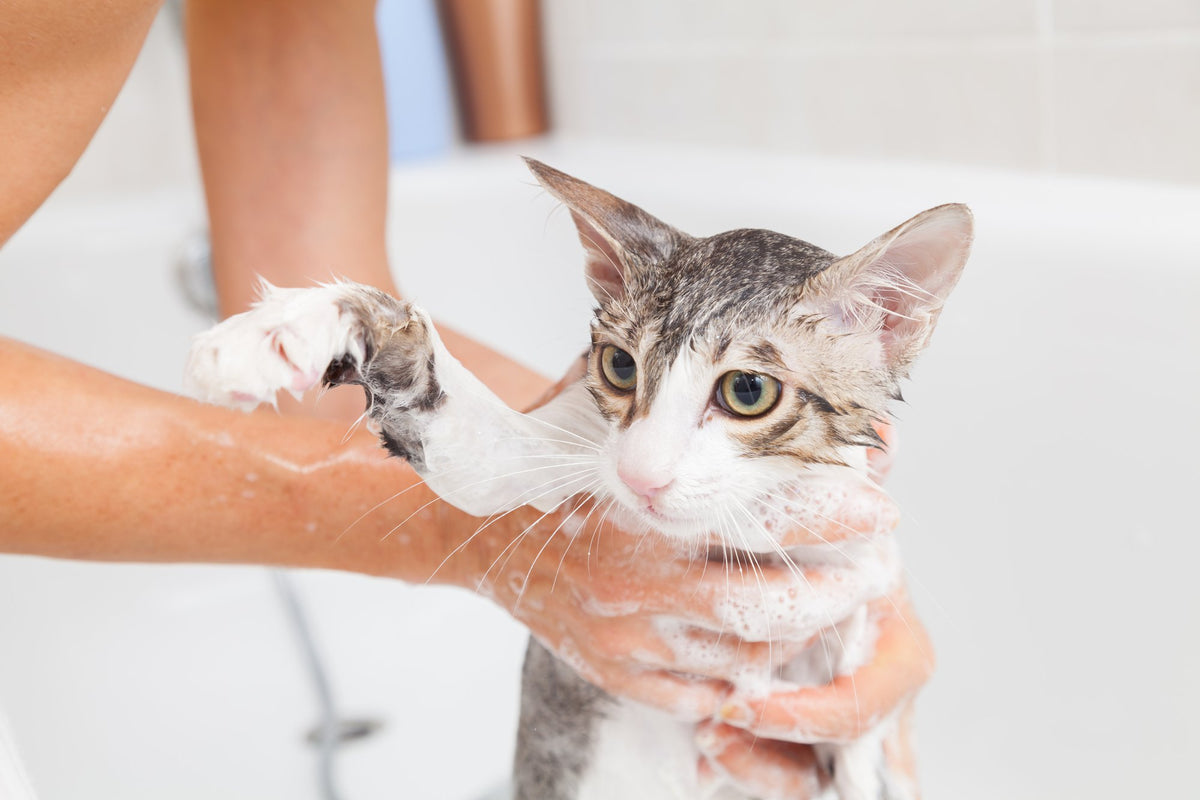Do cats need baths? There’s a common debate among cat owners about whether your feline friend truly needs a bath. While cats are known for their self-grooming habits, there are situations where a bath can be beneficial for their health and well-being. Understanding the reasons behind bathing your cat and recognizing when it’s necessary will help you make informed decisions about your pet’s grooming routine. In this article, we’ll explore when and why your cat might need a bath, along with tips for accomplishing this task effectively and safely.
Key Takeaways:
- Cats Self-Groom: Most cats are proficient at grooming themselves, often eliminating the need for regular baths.
- Exceptions Exist: Certain circumstances such as skin conditions, arthritis, or long-haired breeds may necessitate occasional bathing.
- Bathing Techniques: If a bath is required, use cat-specific shampoos and ensure a calm environment to reduce stress.
Understanding Cat Grooming

While you may wonder whether your feline friend needs a bath, it’s important to first understand the natural grooming behaviors that cats exhibit. Cats are inherently clean animals and have developed specific habits to maintain their hygiene through self-grooming. This instinctual behavior not only helps them stay clean but also enables them to regulate their body temperature and reduce stress.
Natural Grooming Behaviors
One of the fascinating aspects of cats is their commitment to daily grooming rituals. You might notice your cat spending significant time licking its fur, which aids in removing dirt and loose hair. This meticulous grooming is vital for their overall health and well-being, contributing to both their physical appearance and emotional state.
The Role of Cats’ Tongues
Understanding how cats’ tongues work can provide insights into their grooming habits. They possess tiny, hook-like structures called papillae that help them remove debris and loose fur effectively. This unique feature not only facilitates cleaning but also distributes natural oils across their coat, keeping it healthy and shiny.
Cats are equipped with a tongue that serves more than just a feeding function. These papillae give their tongues a rough texture, acting like a natural brush as they groom themselves. When your cat licks its fur, these structures help in detangling knots and removing dead hair, ensuring a well-groomed coat. Additionally, this self-grooming process supports skin health by stimulating blood flow and distributing important oils, enhancing your cat’s overall well-being.
When Baths May Be Necessary

Now, while cats are generally good at grooming themselves, there are specific situations when a bath might be necessary. In some cases, it could be due to health reasons, environmental factors, or even specific breed considerations. For more information, check out Do Cats Need Baths? Usually, not. Here’s why.
Health Reasons
To maintain your cat’s health, a bath may be warranted if they become ill and are unable to groom effectively. Conditions such as skin infections, allergies, or parasites may necessitate bathing to ensure proper hygiene and recovery.
Environmental Factors
An array of environmental conditions can prompt you to consider giving your cat a bath. Factors to be mindful of include:
- Exposure to toxic substances
- Getting into something sticky or smelly
- Living in a dusty or dirty environment
- Seasonal changes causing excessive shedding
Assume that if your cat frequently encounters any of these scenarios, a bath may become necessary. Note, it’s important to assess the situation before proceeding.
Baths, in some cases, can help wash away irritants and allergens, making your cat more comfortable. If your feline friend has rolled in a mess or encountered a substance that’s harmful, cleaning them can prevent further issues.
- Fleas or ticks that may require elimination
- Involvement in a muddy or dirty situation
- Obvious odor issues
Assume that your cat’s comfort and health should always come first when considering a bath.
Specific Breed Considerations
Reasons you might need to bathe your cat may also be influenced by their breed. Long-haired cats, for instance, may need occasional baths to prevent matting or tangling in their fur.
This is particularly true for breeds like Persians and Maine Coons, which have luxurious but high-maintenance coats. Regular grooming can help reduce the need for baths, but baths might be needed to keep their fur clean and healthy, especially if they encounter environmental contaminants.
Bathing Techniques for Cats
Not all cats require bathing, but when the need arises, there are effective techniques to follow that ensure the process is smooth for both you and your feline friend.
Preparing for the Bath
Bath time should always start with preparation. Gather all your supplies before you begin, including towels, a pet-friendly shampoo, a non-slip mat, and a cup or sprayer for rinsing. This way, you won’t have to leave your cat unattended, which can lead to stress or escape attempts.
Choosing the Right Products
Bath products for cats are necessary for a positive experience. Opt for a gentle, hypoallergenic shampoo designed specifically for cats, as human shampoos can irritate their skin. Always check for labels that indicate they are free of harsh chemicals and fragrances that can be offensive to cats.
With so many options available, take the time to select the best products for your cat’s specific needs. For instance, if your cat has sensitive skin or allergies, it’s crucial to find a specialized formula that caters to these issues. Additionally, consider a moisturizing conditioner to keep their fur soft and healthy, ensuring your cat has a pleasant bathing experience.
Step-by-Step Bathing Process
Bath time may seem daunting, but following a clear process can make it manageable. Here’s a simple breakdown:
Bathing Steps
| 1. Prepare your space | Gather supplies and ensure the area is safe and comfortable. |
| 2. Introduce your cat | Calmly place your cat in the bathing area and speak softly to reassure them. |
| 3. Wet your cat | Use lukewarm water, avoiding the face, and gently wet their fur. |
| 4. Apply shampoo | Massage a small amount of pet shampoo into the coat, ensuring even coverage. |
| 5. Rinse thoroughly | Use clean water to rinse out all shampoo, leaving no residue. |
| 6. Dry your cat | Wrap your cat in a towel to absorb excessive moisture before letting them air dry. |
Process each step with patience, allowing your cat to acclimate to the water and handling. If your pet becomes anxious, take a break and try again. Always reward your cat afterward with treats or playtime to create positive associations with bath time.
Alternatives to Bathing
Once again, while the thought of giving your cat a bath may seem overwhelming, there are several effective alternatives to keeping your feline friend clean and tidy. These options can minimize the stress on both you and your cat while maintaining their hygiene.
Dry Shampoo Options
Alternatives like dry shampoos specifically formulated for cats can be a lifesaver. These products typically come in a spray or powder form and help absorb excess oils, dirt, and odors without the need for water. Simply apply, massage into your cat’s fur, and brush away the residue for a fresh scent and cleaner coat.
Regular Brushing Techniques
With regular brushing, you can greatly reduce the need for baths. This practice not only removes loose fur and dirt but also helps distribute natural oils throughout your cat’s coat, promoting healthy skin and a shiny appearance.
Bathing frequency can vary depending on your cat’s coat type and lifestyle, but establishing a regular brushing routine tailored to your cat’s needs will keep their coat in top condition. Whether your cat has long or short hair, using the appropriate brush can help prevent matting and reduce shedding, allowing you to maintain cleanliness without the hassle of a bath.
Professional Grooming Services
An option worth considering is professional grooming services, which can provide a thorough cleaning and care routine tailored to your cat’s specific needs. This choice can be particularly beneficial for cats that are difficult to bathe at home.
Plus, professionals are trained to handle various temperaments and fur types, ensuring your cat’s experience is as pleasant as possible. Regular visits to a groomer can complement your at-home care, enhancing your cat’s overall hygiene while saving you both time and stress.
Final Words

With this in mind, it’s important to recognize that most cats do not require regular baths due to their natural grooming behaviors. However, if your cat gets into something particularly messy or has specific health issues, a bath might be necessary. Always keep in mind your cat’s comfort and stress levels; gradual acclimation to bath time can help. Ultimately, maintaining your cat’s hygiene through regular brushing and monitoring will often suffice, allowing your feline friend to thrive without unnecessary baths.
FAQ
Q: Do cats need baths?
A: Generally, cats do not require regular baths like dogs do. Cats are proficient groomers and typically keep themselves clean through licking. However, certain circumstances may warrant a bath, such as if a cat gets into a sticky substance, has a skin condition, or suffers from excessive oiliness. In such cases, a bath can help remove dirt and pollutants from their fur.
Q: How often should I bathe my cat?
A: If you determine that your cat requires a bath, it is recommended to do so sparingly—no more than once every few months. Overbathing can strip the cat’s coat of natural oils, leading to dry skin and irritation. Cats with specific conditions may require more frequent baths, so consulting with a veterinarian is advisable if you have concerns about your cat’s hygiene.
Q: What is the best way to bathe a cat?
A: If you need to bathe your cat, ensure you have all necessary supplies ready, including a cat-specific shampoo, towels, and possibly a rubber mat to prevent slipping. Use lukewarm water in a sink or bathtub, and gently wet your cat’s fur while avoiding the face and ears. Apply the shampoo according to the directions, and rinse thoroughly. After the bath, wrap your cat in a towel to dry them off and keep them warm. Always be gentle, and if your cat is particularly resistant, consider seeking assistance from a professional groomer.










